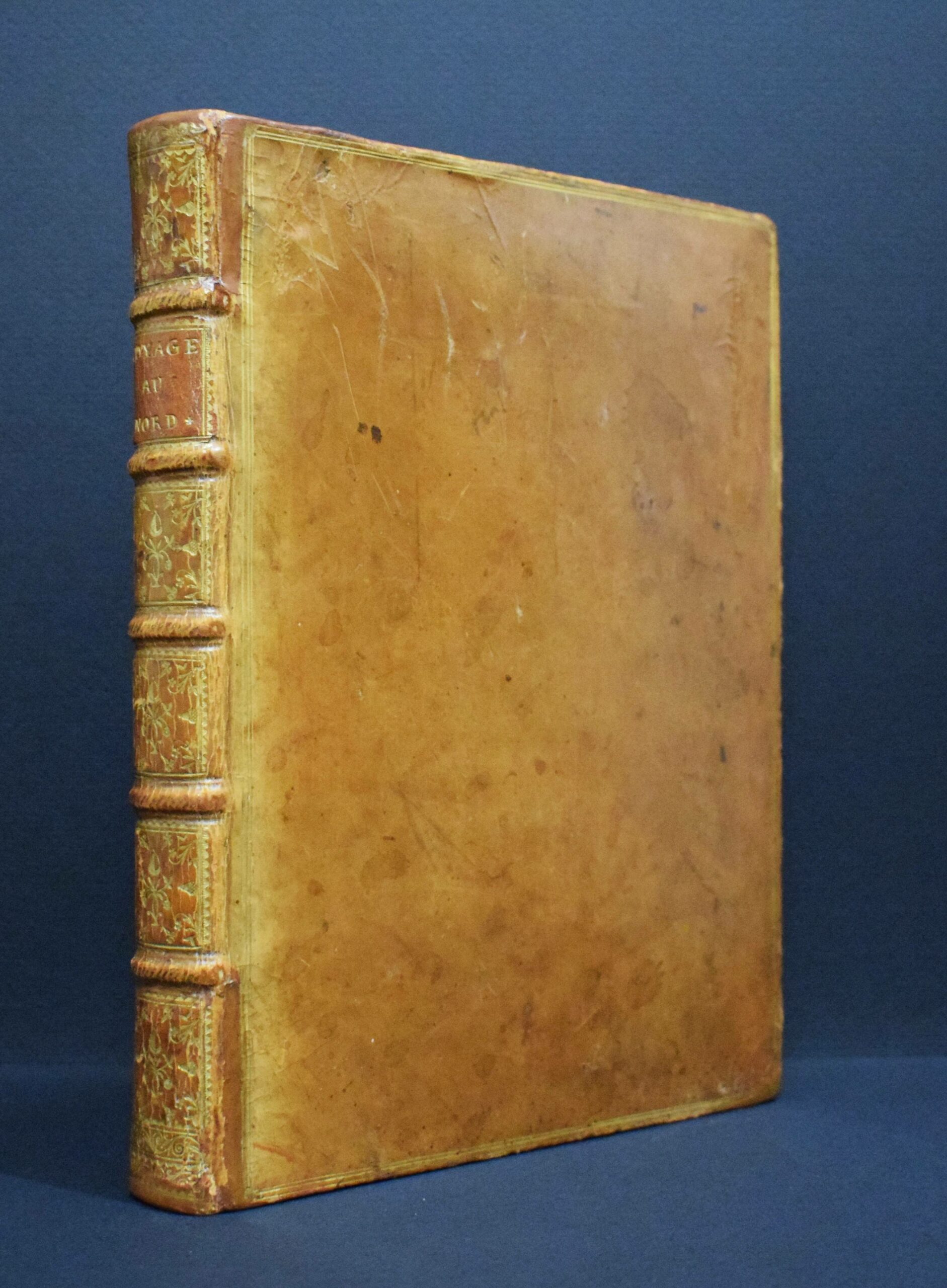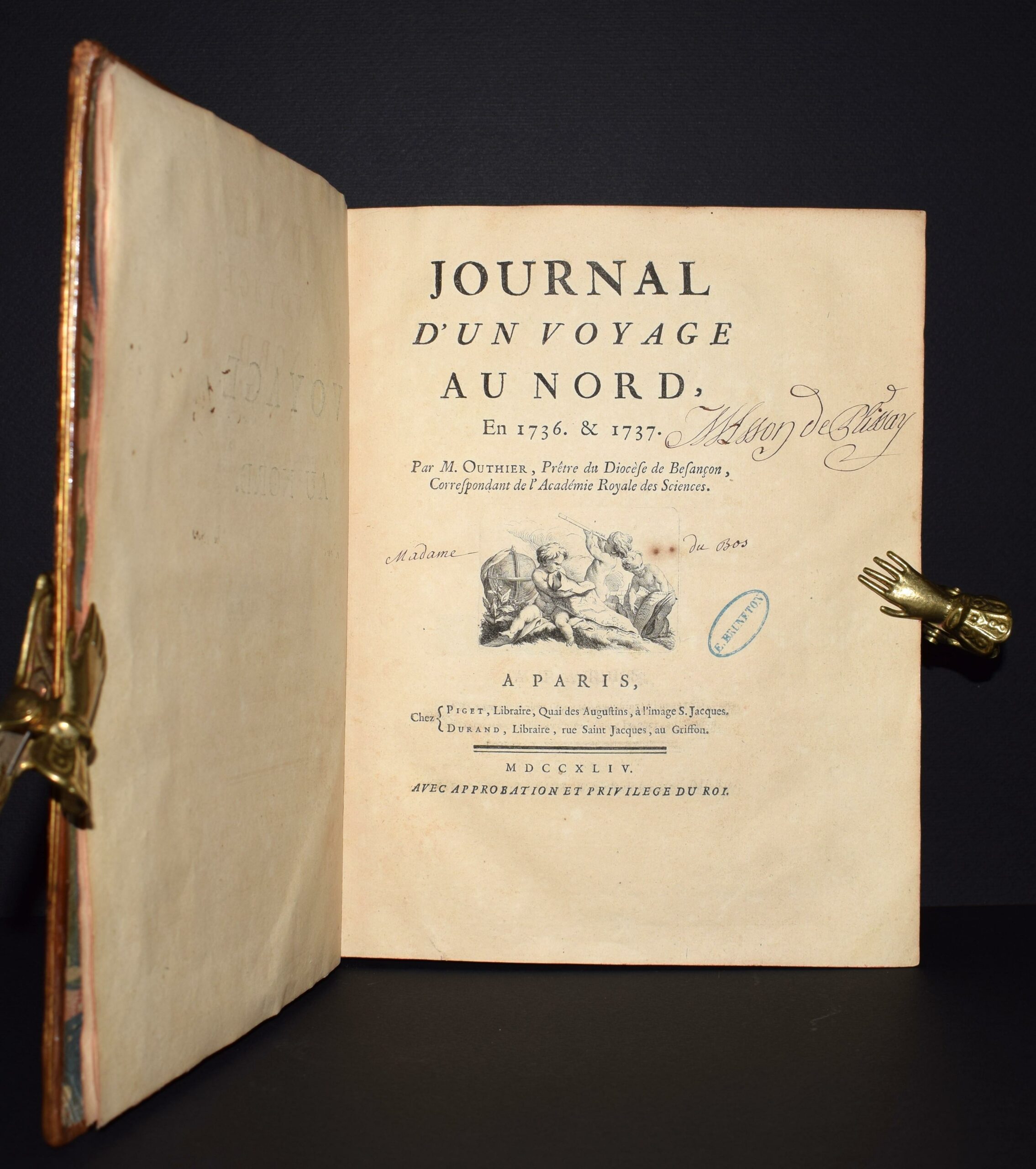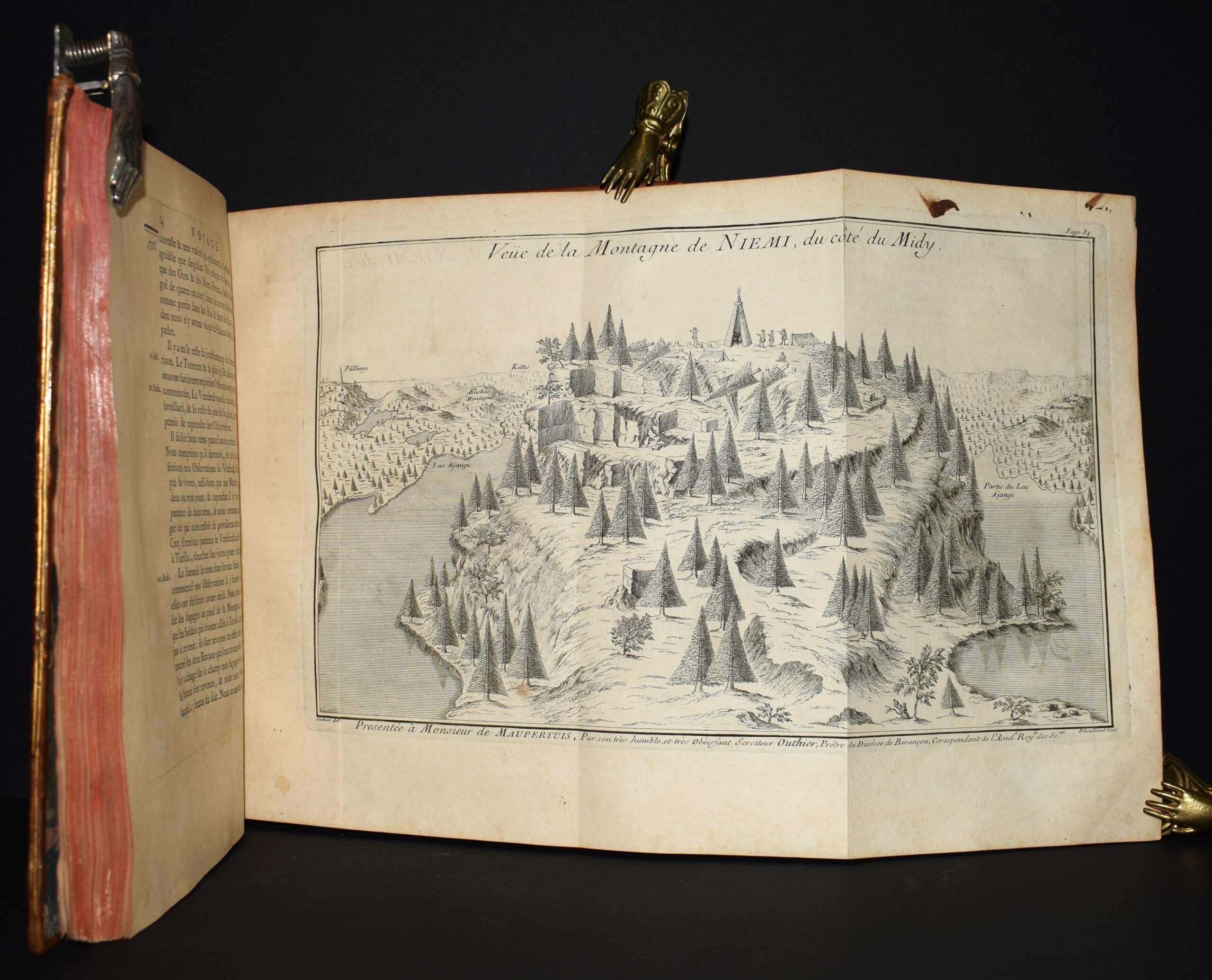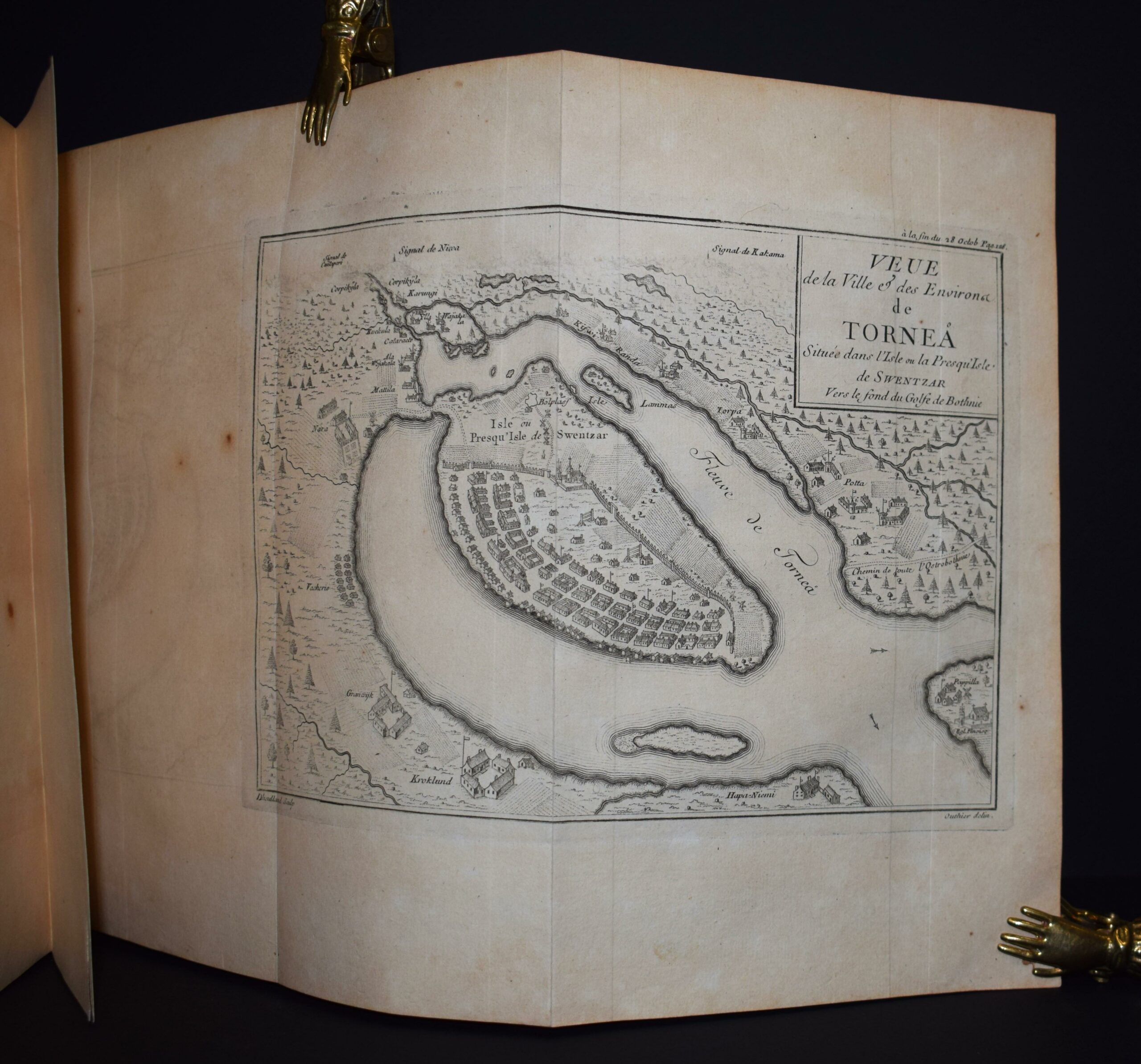Outhier, Réginald: Journal d’un voyage au Nord (1744)
€1.750,00
1 in stock
Réginald Outhier (1694-1774)
Journal d’un voyage au Nord En 1736. & 1737. Par M. Outhier, Prêtre du Diocèse de Besançon, Correspondant de l’Académie Royal des Sciences.
Paris, Chez Piget [and] Durand, MDCCXLIV (1744). Quarto. VIII, 238 (2) pp. Contemporary full calf-leather binding, spine with five raised bands decorated with gilt floral motifs and red label with gilt title. Red edge painting. Complete with maps and 16 folding copper plates. Title page with former owners name in ink and one exlibris stamp.
First edition. Notes of the famous voyage by members of the French Royal Academy of Sciences (Académie Royale des Sciences). The voyage, also known as the French Geodesic Mission to Lapland, was one of the two geodesic missions for measuring the shape of the Earth – the other expedition travelling South.
The expedition was lead by the French mathematician and philosopher Pierre Louis Maupertuis (1698-1759) and they were joined by the famous Swedish scientist Anders Celsius (1701-1744). Using the measurements taken during the geodesic mission, the team was able to prove Sir Isaac Newton’s (1642-1726*) prediction that Earth would be flattened at the poles. The measurements and methods used to prove this are featured near the end of Outhier’s book.
* Interestingly, Sir Isaac’s death occurred at a time when two different calendars were used in Europe. The years given are in the Old Style Julian years that were is use in England at the time – however, according to the modern New Style Gregorian calendar he was born in 1643 and died in 1727.







